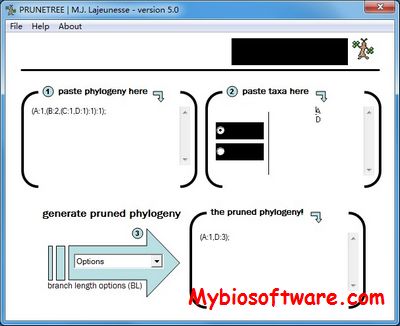ANGST
:: DESCRIPTION
AnGST performs a phylogenetic reconciliation between a given species and gene tree, positing the best scoring set of HGT, DUP, and LOS events to explain all topological incongruities between the two trees. In order to protect against phylogenetic noise, we have designed AnGST to be capable of incorporating information from dozens of bootstrap trees simultaneously. In cases of variations among bootstrap subtrees, the subtree that best accords with the reference tree is adopted.
::DEVELOPER
:: SCREENSHOTS
N/A
:: REQUIREMENTS
- Windows / Linux / Mac OsX
- Python
:: DOWNLOAD
:: MORE INFORMATION
Citation
LA David & EJ Alm.
“Rapid evolutionary innovation during an Archaean Genetic Expansion.”
Nature, 2010. doi:10.1038/nature09649.


